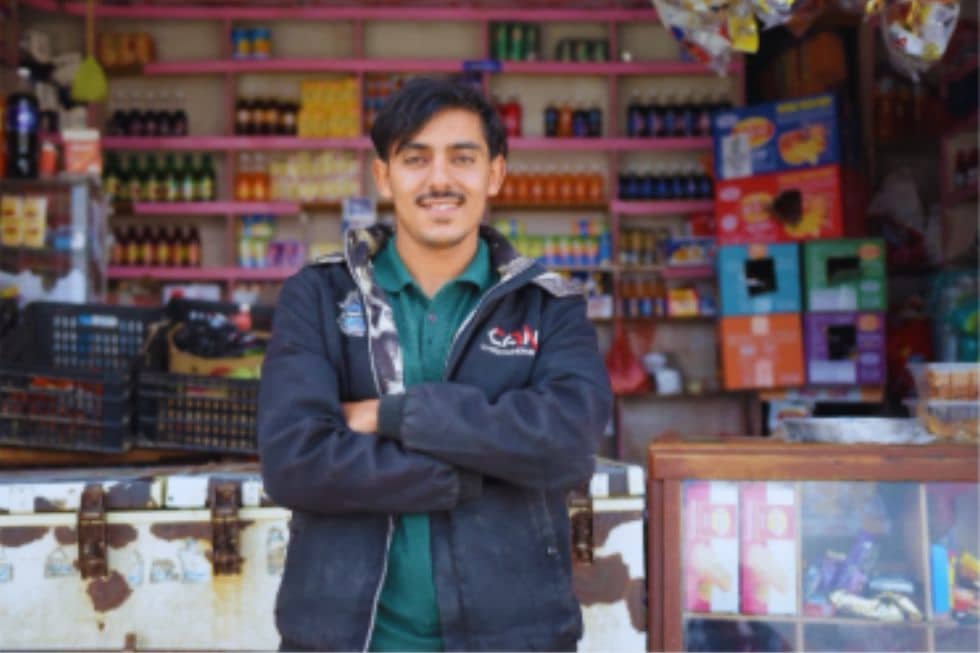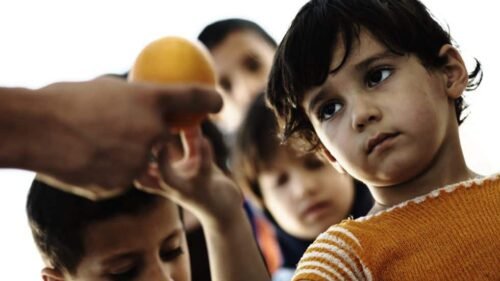According to the UNICEF 2022 data, nearly three-quarters of young people aged 15 to 24 in 92 countries are off-track to acquire the skills needed for employment. These staggering numbers reflect a somber reality; in many developing countries, the expanding global youth population is not able to keep pace with the requirements of the global economy and job markets.
Global youth with global challenges
The main global challenges preventing youth from gaining relevant skills center around access, economics and regional disparities. Infrastructure gaps in developing regions limit basic educational access, while the digital divide cuts off rural and low-income youth from online learning. Economic pressures force many into immediate work rather than skill development, and cultural barriers particularly restrict young women’s opportunities.
Regional challenges vary significantly — developing countries struggle with basic literacy and infrastructure, and developed nations face challenges related to adapting to automation and ensuring minority access. At the same time, conflict zones deal with displaced youth and disrupted education. This creates a widening global divide between youth who can access relevant training and those who cannot, reinforcing existing inequalities in an increasingly skill-demanding job market.
In addition to these challenges, a critical and often overlooked barrier is the lack of structured career guidance, which leaves many youth unaware of viable employment pathways or the skills demanded by the labor market. As a result, they often pursue traditional career tracks influenced by social norms — such as medicine, engineering or public service — leading to oversaturation in specific sectors and long delays before securing their first job.
Moreover, the mismatch between education systems and labor market needs — due to outdated curricula and limited emphasis on digital, entrepreneurial and soft skills — further hinders youth employability. These issues are even more acute for refugees and internally displaced youth, who face legal, logistical and economic barriers to accessing training and employment.
Addressing these gaps requires systemic reforms, including integrating career guidance into education systems, investing in digital access and fostering cross-sector collaboration. This collaboration ensures that skill-building initiatives are inclusive, demand-driven and resilient to economic disruption.
Keeping abreast of technology
The rapid pace of technological change around the world requires fundamentally different approaches to skills development. Traditional models focused on specific technical skills become obsolete quickly. Instead, programs need to emphasize meta-skills: critical thinking, adaptability, digital literacy and continuous learning capabilities. The Education Above All (EAA) Foundation’s approach of combining soft skills with technical training through the Silatech program reflects this understanding.
However, programs must go further by integrating emerging technologies into training curricula. This means partnerships with tech companies, regular curriculum updates based on labor market data and modular learning approaches that allow rapid skill updates. The concept of “learning pathways” rather than fixed programs becomes crucial. Young people need systems that enable them to upskill and reskill as markets evolve continuously.
For example, through the Education Above All Foundation’s One Million Opportunities (1MiO) program in Brazil that was launched in partnership with Generation Unlimited-UNICEF, the EAA-Silatech program has developed and managed a Learning Management System (LMS) within the 1MiO platform, offering youth market-relevant virtual training programs in partnership with private companies, governments and civil society organizations. These modular courses come with national and regional campaigns that encourage youth to enroll and develop core competencies that align with current and future job demands.
Another example is the Green Visions and Thriving Futures: Empowering Youth for Sustainable Impact project in Egypt, in collaboration with the Reach Out To All (ROTA) Program. EAA goes a step further by equipping youth with in-demand skills while connecting them to employment and entrepreneurship opportunities that also address climate action and community sustainability, aligning with emerging green economy priorities. These initiatives reflect EAA’s commitment to creating flexible, future-focused learning ecosystems that are adaptable to changing labor markets and resilient to economic shocks.
Fostering education equality and creating sustainable employment
Educational inequality creates cascading effects that limit youth participation in enterprise creation. Without foundational literacy and numeracy, young people can’t access more advanced training programs. Digital divides worsen this situation, as individuals without reliable internet access miss out on online learning opportunities and digital entrepreneurship.
Effective strategies require multi-level interventions. At the infrastructure level, governments and organizations need to invest in connectivity and device access. Creative solutions include mobile learning labs, community technology centers and peer-to-peer learning networks. Programs must also address social barriers — family expectations, gender norms and cultural attitudes toward entrepreneurship that particularly affect marginalized youth.
Alongside these efforts, different sectors need to work together. They should integrate education, technology, employment, and youth programs more closely to better support young people who aspire to start their businesses. This could include adding entrepreneurship and digital skills to school curricula, making it easier for youth to register and run small businesses, and involving them in shaping the policies that affect them. When these efforts are aligned, it becomes much easier to create opportunities that young people can access and benefit from.
Sustainable employment requires moving beyond placement to career development. This demands deeper private sector engagement. Sustainable youth employment requires a multi-stakeholder approach, bringing together governments, educational institutions, private sector employers and non-governmental organizations (NGOs).
Companies need incentives to invest in youth development beyond immediate hiring needs, which may involve governments incentivizing businesses to hire and train young workers through tax breaks or wage subsidies. Public-private partnerships should focus on creating career pathways, not just entry-level positions. Regional economic development strategies must also prioritize sectors with growth potential. This requires labor market analysis, investment in supportive infrastructure and coordination between education providers, employers and government agencies.
At the same time, young people need a mix of technical skills, strong communication, adaptability and digital literacy to thrive in today’s job market. It is also essential to involve them in shaping programs so that the support offered reflects their actual needs. In places where formal jobs are limited, entrepreneurship should be encouraged as another path to employment. This means providing access to finance, mentorship and practical business support.
What about the digital economy?
The digital economy creates new categories of work that traditional education systems don’t address. Skills development frameworks must prioritize digital competencies while also fostering adaptability. Beyond basic digital literacy, young people need an understanding of digital marketing, e-commerce, remote work protocols and platform-based earning strategies. Skills frameworks must become more granular and stackable. Instead of broad certifications, micro-credentials for specific digital skills allow rapid adaptation for youth to market changes, allowing them to stay competitive in fast-changing sectors.
Moreover, governments and educational institutions should also partner with tech companies to ensure curricula remain up to date with industry trends. Digital skills training must combine with business skills — financial literacy, soft skills and project management. The most successful digital economy participants combine technical capabilities with entrepreneurial thinking.
Furthermore, young people living in conflict zones, refugee camps or as internally displaced people face even greater hurdles in accessing digital skills training. Programs targeting these groups must be flexible and context-sensitive, offering mobile or offline learning options, psychosocial support and partnerships with humanitarian organizations. Tailoring skills development to their realities ensures that even the most vulnerable youth can benefit from opportunities in the digital economy.
New solutions for old problems
Marginalized youth, including refugees, young women and those in rural areas, require targeted interventions to overcome systemic barriers that can be both economic and social:
- Mobile education units and community-based training programs can reach those in remote or conflict-affected regions.
- Gender-sensitive policies — such as childcare support and safe transportation for young women — can improve participation in skills programs.
- Digital literacy initiatives must pair with infrastructure development, such as expanding broadband access to underserved areas.
- Flexible education policies that allow alternative pathways to credentials help youth who cannot complete traditional schooling.
- Financial inclusion initiatives — including digital payment systems and micro-savings programs — provide foundations for economic participation.
- Social protection systems must also evolve to support new forms of work.
As freelancing and gig economy participation grow, young people need access to benefits and protections traditionally tied to formal employment.
In addition to these targeted interventions, proactive policy leadership at the national level can play a transformative role in empowering marginalized youth. For example, implementing a national policy mandating paid internships or apprenticeships has proven effective in mobilizing both public and private sector actors to create large-scale employment pathways for young people.
This approach combines structured, in-work learning with continued education, equipping youth — particularly those from vulnerable backgrounds — with practical experience and relevant skills that enhance employability. Such programs often serve as a bridge to permanent employment, ensuring that they leave no young person behind in the broader effort to enhance skills development and economic inclusion.
The role of the Education Above All Foundation
EAA plays a catalytic role in advancing youth skills and employment through funding, advocacy and partnerships. By co-financing up to 50% of project budgets, EAA leverages additional resources from private sector partners, maximizing impact. EAA helps create ecosystems where young people can access skills, jobs and entrepreneurial opportunities, ultimately driving inclusive economic growth by fostering multi-stakeholder collaboration. EAA also prioritizes youth economic participation, aligning with global goals like the Sustainable Development Goals (SDGs).
Through initiatives like job matching platforms, guarantee funds and sector-specific training, EAA ensures that programs are scalable and sustainable. Most importantly, EAA’s approach recognizes that youth empowerment requires long-term ecosystem change, not just individual skill development. By working at multiple levels, from individual training to policy influence, the foundation helps create conditions where all young people can access economic opportunities and contribute to their communities’s development.
The challenges facing global youth are complex and interconnected, requiring sophisticated responses that address both immediate needs and systemic barriers. To achieve success, stakeholders must collaborate consistently, adapt their programs to changing conditions and commit to including every young person in economic participation.
The Education Above All (EAA) Foundation is a global foundation established in 2012 by Her Highness Sheikha Moza bint Nasser. EAA Foundation aims to transform lives through education. They believe that education is the single most effective means of reducing poverty, creating peaceful and just societies, unlocking the full potential of every child and youth and creating the right conditions to achieve Sustainable Development Goals (SDGs).
Through their multi-sectoral approach, unique financing models, focus on innovation as a tool for social good and partnerships, they aim to bring hope and real opportunities to the lives of impoverished and marginalized boys and girls. EAA Foundation is comprised of the following programs: Educate A Child (EAC), Al Fakhoora, Silatech, Reach Out To All (ROTA), Protect Education in Insecurity and Conflict (PEIC), Innovation Development (ID) and the Together project.
[Kaitlyn Diana edited this piece.]
The views expressed in this article are the author’s own and do not necessarily reflect Fair Observer’s editorial policy.
Support Fair Observer
We rely on your support for our independence, diversity and quality.
For more than 10 years, Fair Observer has been free, fair and independent. No billionaire owns us, no advertisers control us. We are a reader-supported nonprofit. Unlike many other publications, we keep our content free for readers regardless of where they live or whether they can afford to pay. We have no paywalls and no ads.
In the post-truth era of fake news, echo chambers and filter bubbles, we publish a plurality of perspectives from around the world. Anyone can publish with us, but everyone goes through a rigorous editorial process. So, you get fact-checked, well-reasoned content instead of noise.
We publish 3,000+ voices from 90+ countries. We also conduct education and training programs
on subjects ranging from digital media and journalism to writing and critical thinking. This
doesn’t come cheap. Servers, editors, trainers and web developers cost
money.
Please consider supporting us on a regular basis as a recurring donor or a
sustaining member.
Will you support FO’s journalism?
We rely on your support for our independence, diversity and quality.








Comment